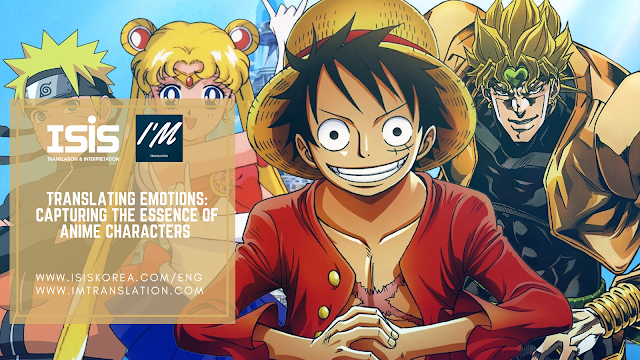Translating Emotions: Capturing the Essence of Anime Characters
Translating Emotions: Capturing the Essence of Anime Characters
Anime, with its rich storytelling and vibrant characters, often delves into the depths of human emotions, offering viewers a kaleidoscope of feelings ranging from joy and love to sadness and despair. However, conveying these nuanced emotions across different languages presents a unique challenge for translators. In this blog post, we'll explore how translators capture the essence of anime characters' emotions, examining specific examples and techniques that bring these animated worlds to life for global audiences.
Understanding Cultural Context
One of the fundamental aspects of translating emotions in anime is understanding the cultural context in which the series was created. Emotions can be expressed differently across cultures, and what resonates with one audience may not have the same impact on another. Translators must immerse themselves in the cultural nuances of both the source material and the target audience to ensure that emotional scenes are accurately conveyed.
For example, the concept of "ganbatte" (頑張って) in Japanese, often translated as "do your best" or "hang in there," carries a deeper cultural meaning of perseverance and determination. Translators may need to find equivalent expressions in other languages that capture the same sentiment without losing the essence of the original emotion.
Preserving Voice and Tone
Anime characters are defined not only by their actions but also by their unique voices and speech patterns. Translators must preserve the voice and tone of each character to maintain authenticity and emotional resonance. This involves careful consideration of dialogue choices, wordplay, and cultural references that contribute to a character's personality and emotional state.
For instance, a character who speaks in a formal or archaic manner in Japanese may be translated with similar linguistic features in English to convey the same sense of elegance or authority. Similarly, slang or regional dialects may be adapted to reflect the cultural background of the characters while remaining accessible to the target audience.
Translating Subtext and Nonverbal Cues
In anime, much of the emotional depth is conveyed through subtle subtext and nonverbal cues, such as facial expressions, body language, and intonation. Translators must be adept at capturing these nuances in their translations to ensure that the emotional impact is not lost in transit.
For example, a character's hesitant glance or a wistful smile can speak volumes about their inner turmoil or longing. Translators may use descriptive language or carefully chosen words to convey these emotions indirectly, allowing viewers to interpret the subtext while remaining faithful to the original intent of the scene.
Adapting for Different Audiences
As anime continues to gain popularity worldwide, translators are tasked with adapting emotional content for diverse audiences with varying cultural backgrounds and language preferences. This requires sensitivity and creativity to strike a balance between staying true to the original emotions and making the content relatable to viewers from different cultures.
For instance, humor that relies on wordplay or cultural references may be adapted or replaced with equivalents that resonate with the target audience. Emotional themes and character motivations may also be contextualized to ensure that viewers can connect with the story on a deeper level, regardless of their cultural or linguistic background.
In conclusion, translating emotions in anime is a multifaceted process that requires linguistic expertise, cultural sensitivity, and a deep understanding of the source material. By preserving the voice and tone of the characters, capturing subtext and nonverbal cues, and adapting for different audiences, translators play a vital role in bringing the rich emotional tapestry of anime to viewers around the world, allowing them to experience the full range of human emotions across languages and cultures.
Need a translation? I’M Translationand ISIS Korea provides professional translation and interpretation services.
How
might I’M Translation and ISiS Korea aid translation?
At I’M Translation and ISiS Korea, we can connect
you with a professional translators and interpreters. We have over 30+
languages available on our platform and we are flexible and available
regardless of the language pair, topic, and time zone. Please visit us at www.imtranslation.com and www.isiskorea.com/eng to request a free translation and interpretation
quote. Thank you.




Comments
Post a Comment